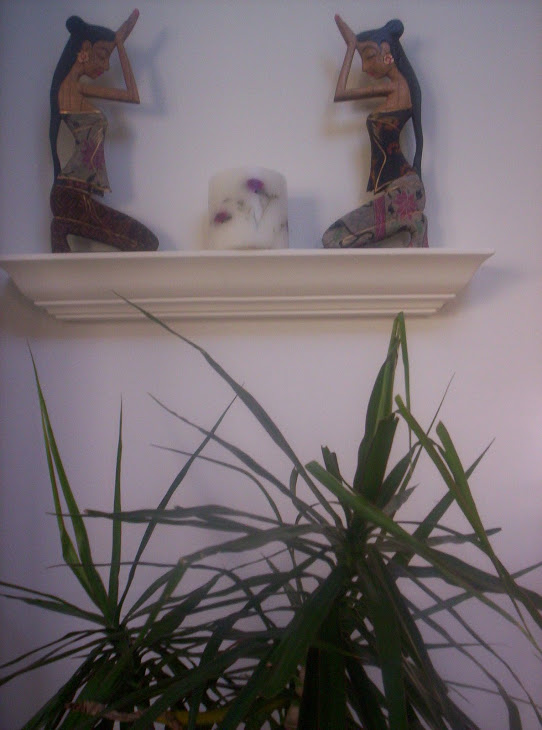

 L-R Dr. Qiyamah A. Rahman and Dr. Niara Sudarkasa (key note speaker and alum of University of Michigan. )
L-R Dr. Qiyamah A. Rahman and Dr. Niara Sudarkasa (key note speaker and alum of University of Michigan. ) Dr. Niara Sudarkasa in the middle with friends
Dr. Niara Sudarkasa in the middle with friends L-R Dr. Sudarkasa on left and a City Council woman that brought greetings from the City of Atlanta.
The Charles H. Wright Museum of African American History in Detroit, Michigan recently sponsored an all day program designed to encourage and assist families in the collection, preservation and sharing of their family histories. The seminar is part of a comprehensive initiative to train participants from area civic and faith-based organizations in preservation techniques that include photographs and textiles/quilts; family genealogy and oral history; the use of metal, paper and wood; diaries and journals; and the use of technology to preserve family history.
The June 2, 2007 program I attended was very comprehensive and included the following presentations:
- Writing about our African Past: A Personal Journey
- Writing Biographies: The Role of Family Records
- Documenting Family Life in Revolutionary Movements: A Focus on the Black Panthers
- Henry Ford and the Establishment of Inkster, Michigan: African American Migration and the Automotive Industry
- Profile of a Family: Generations of Service and Sacrifice
- The Ties that Bind: Family, Church and Communities
- Creating Family History Records with Contemporary Technology
- Rites of Passage in the Black Church: Collecting and Preserving the History of Socializing Black Youth into Adulthood
- Preserving Family History in the Nation of Islam
- Reclaiming African Family Values for Strengthening and Sustaining African American Families
The roster of speakers included:
Dr. Niara Sudarkasa, formerly Professor and Associate Vice President for Academic Affairs at the University of Michigan (U of M). She remembered me from my student days at U. of M.
Dr. Melba J. Boyd, Chairperson of the Department of Africana Studies at Wayne State University (and another of my alma maters)
Dr. Ahmad Rahman, Professor of History at University of Michigan-Dearborn
Dr. Patrick Pieh, Chief Academic Officer at Wayne County Community College (A direct descendant of Amistad)
Dr. Howard Lindsey, Assistant Professor of History at DePaul University
Dr. Genna Rae McNeil, Professor of History at University of North Carolina
Minister Daawud Muhammad, Michigan Representative of Nation of Islam, Mosque #1
There were a number of memorable moments for me including being able to see Dr. Sudarkasa again after many years and informing her that my DNA results indicate that I am Nigerian from the Yoruba people. This is significant because she holds a Chieftancy title in Ife, the oldest of the historic Yoruba Kingdoms in Nigeria. Meeting Dr. Melba Boyd for the first time and discovering that we are both admirers of Frances Ellen Watkins Harper and Charlotte Forten was a high point of the day. I had just come into possession of a treasured video on Charlotte Forten that Boyd had been looking for. Both Frances and Charlotte were 19th century African American Unitarians. This in itself makes them anomalies among only a handful of African American female Unitarians that I have been able to identify from that era.
The lady of the hour though was the Dr. Rachel Boone Keith, one of the early Black female physicians treating the African American population during the peak of the Great Migration. Her life told to us through her daughter and granddaughter who are third or fourth generation physicians was a powerful example of an inspiring woman. Having recently read Adam Hochschild's, King Leopold's Ghost: A Story of Greed, Terror, and Heroism in Colonial Africa, is even more thoughtprovoking in light of the fact that Dr. Keith's father and mother, Rev. C.C. Boone, B.D., M.D. and Rachel Boone were medical missionaries in the Congo and Liberia from 1900 to 1926 and authored the books: The Congo as I Saw It and Liberia As I Know. To read their books might provide some insight in understanding the role of Black missionaries and any eye witness accounts of the holocaust that King Leopold instituted. If you have not read the book and have the stomach to hear as accurate an account as is possible given that almost no survivors lived to tell the story of this rape and plunder of the Congo, I highly recommend it.
I say thank you to Dr. Charles H. Wright, a physician, and the 30 other Detroiters that founded the Museum of African American History in 1965. Everytime I have entered the doors of this magnificent structure it has left me with a sense of awe and newfound awareness of the contributions of African Americans and the richly tragic and triumphant journey that brought us from our roots to this country and for some of us the return home.
Blessed BE!
The next time you see me please remind me to tell you the story about the time I met the buyer for the museum in Ghana and the riot that she caused in the market place in the summer of 1996!

